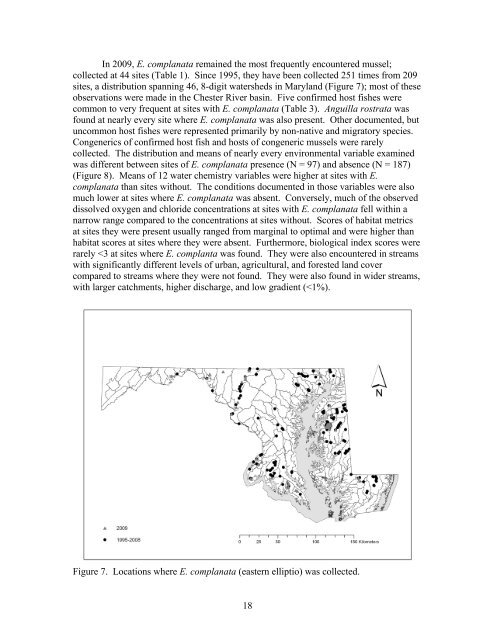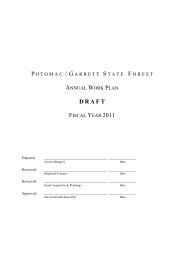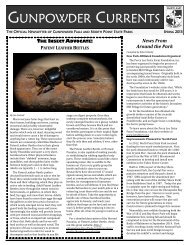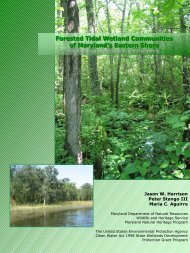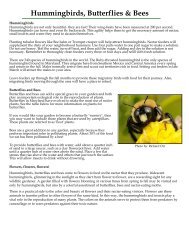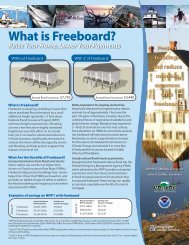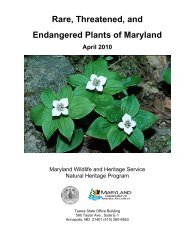Freshwater mussel records collected by the Maryland Department of ...
Freshwater mussel records collected by the Maryland Department of ...
Freshwater mussel records collected by the Maryland Department of ...
You also want an ePaper? Increase the reach of your titles
YUMPU automatically turns print PDFs into web optimized ePapers that Google loves.
In 2009, E. complanata remained <strong>the</strong> most frequently encountered <strong>mussel</strong>;<br />
<strong>collected</strong> at 44 sites (Table 1). Since 1995, <strong>the</strong>y have been <strong>collected</strong> 251 times from 209<br />
sites, a distribution spanning 46, 8-digit watersheds in <strong>Maryland</strong> (Figure 7); most <strong>of</strong> <strong>the</strong>se<br />
observations were made in <strong>the</strong> Chester River basin. Five confirmed host fishes were<br />
common to very frequent at sites with E. complanata (Table 3). Anguilla rostrata was<br />
found at nearly every site where E. complanata was also present. O<strong>the</strong>r documented, but<br />
uncommon host fishes were represented primarily <strong>by</strong> non-native and migratory species.<br />
Congenerics <strong>of</strong> confirmed host fish and hosts <strong>of</strong> congeneric <strong>mussel</strong>s were rarely<br />
<strong>collected</strong>. The distribution and means <strong>of</strong> nearly every environmental variable examined<br />
was different between sites <strong>of</strong> E. complanata presence (N = 97) and absence (N = 187)<br />
(Figure 8). Means <strong>of</strong> 12 water chemistry variables were higher at sites with E.<br />
complanata than sites without. The conditions documented in those variables were also<br />
much lower at sites where E. complanata was absent. Conversely, much <strong>of</strong> <strong>the</strong> observed<br />
dissolved oxygen and chloride concentrations at sites with E. complanata fell within a<br />
narrow range compared to <strong>the</strong> concentrations at sites without. Scores <strong>of</strong> habitat metrics<br />
at sites <strong>the</strong>y were present usually ranged from marginal to optimal and were higher than<br />
habitat scores at sites where <strong>the</strong>y were absent. Fur<strong>the</strong>rmore, biological index scores were<br />
rarely


